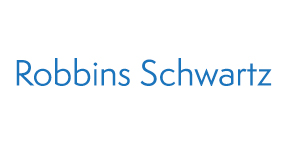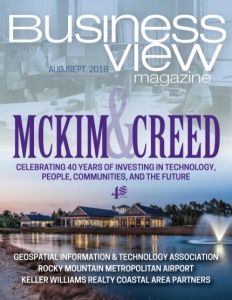Park Forest, Illinois
Sustainability and development
Business View Magazine interviews representatives from Park Forest, IL, as part of our focus on best practices of American municipalities.
The Village of Park Forest, Illinois, in the south Chicago suburbs, began life in 1948, as a planned development to provide housing for GIs returning from World War II. It was the first post-war planned community and its innovative design has been recognized and used as a model for towns throughout the world. The Village of Park Forest has received numerous livability citations, including two All-America city Awards, two Governors Home Town Awards, and the Burnham Award for excellence in planning for its downtown redevelopment. In 2007, it was named one of America’s Most Livable Suburbs by Forbes Magazine, and, in 2014, was ranked third in the nation in affordable housing by Business Insider.
Park Forest, Illinois’s first homes were multi-family rental units for the returning servicemen. Many of those early rentals were later converted to housing cooperatives, but a large number remained rentals. During the early 1950s, thousands of small, single-family “starter-homes” – 900 to 1,500 square feet – were built. Later, a third building surge saw the production of larger, two-story homes, some with four or five bedrooms. But for nearly 40 years, Park Forest remained a somewhat transient community. Families who sought larger, move-up homes had to look elsewhere. In the late 1980s and early 1990s, the Village encouraged the development of larger housing in an attempt to round out its housing stock. Today, of the nearly 9,600 housing units, about 5,700 are single-family homes; another 3,880 are multi-family units, of which almost 2,000 are cooperatives. In addition, scores of the original starter homes have been enlarged, over the years, to fit the needs of today’s homeowners.
 “When the Village was planned, years ago, the planners intentionally made it so that every house was within walking distance of commerce, a school, and a church, as well as open space and parks,” says – Assistant Director of Economic Development, Sandra Zoellner. In fact, Park Forest, Illinois has 2,000 acres of parks, recreation facilities, and open land. In addition to numerous playgrounds, ball fields, and picnic facilities, the Village contains an abundance of tennis courts and is home to one of the most popular outdoor swimming complexes in the state. “And everything is connected with sidewalks and boulevards and cut-throughs,” Zoellner adds. “And, there are about 12,000 trees that are at least 60 years old. We’re called Park Forest for a reason.”
“When the Village was planned, years ago, the planners intentionally made it so that every house was within walking distance of commerce, a school, and a church, as well as open space and parks,” says – Assistant Director of Economic Development, Sandra Zoellner. In fact, Park Forest, Illinois has 2,000 acres of parks, recreation facilities, and open land. In addition to numerous playgrounds, ball fields, and picnic facilities, the Village contains an abundance of tennis courts and is home to one of the most popular outdoor swimming complexes in the state. “And everything is connected with sidewalks and boulevards and cut-throughs,” Zoellner adds. “And, there are about 12,000 trees that are at least 60 years old. We’re called Park Forest for a reason.”
In addition to the careful preservation of its tree canopy, Park Forest, Illinois has a long history of other sustainable practices and programs, and in recent years, the Village has made a concerted effort to become the most sustainable community in the state. “We do have a sustainability plan, and we’re currently working on a climate action plan,” explains Hildy Kingma, Director of Economic Development & Planning. “We try to do our best to help our businesses, as well as our residents, incorporate energy-saving and water-saving devices into their businesses and homes, as much as possible. We certainly walk the talk and are doing that in Village facilities – street lights, stormwater management, etc. That is very important to us.”
A major sustainable project in Park Forest, Illinois’s past was the return of some of the land in its 50-acre, Central Park to its original wetland status. “When it was first built, and over the course of its first four decades of life, it was a combination of playground and ball fields and soccer fields,” Kingma recounts. “For those 40 years, a large part of that park was hard to maintain because it would get very wet and the water would sit there. So, it would take a week or two to mow it and by the time they mowed it, they would have to start over, again. So, that was a lot of staff resources, and greenhouse gas emissions going into the air.
“And so, in the mid 1990s, our Recreation & Parks Department decided that, for a large part of that park, 45 of the 50 acres, they were going to let it go back and be what it really wanted to be, which was a wetland. So, they disconnected the drain tiles in the park and just let the water stand there. Without doing anything else, all of the native plants came back up. We do have to manage it, but right in the center of town, we have this beautiful, 45-acre wetland. They’ve counted over a hundred species of birds out there; there are frogs and deer. That’s one of the early things – long before we thought about doing a sustainability plan – we let that land be what it wanted to be.”
An unanticipated, added benefit of the project was that pesticides and insecticides were no longer needed. “The wetlands act as a natural barrier collector for mosquitoes,” says Zoellner. All of the birds in it manage that, so we don’t have to spray, anymore, or rely on Cook County, or anyone else to spray for mosquitoes here, like they do in other communities.” “The birds eat all the larvae,” adds Kingma. “You can do tests of the water in the wetlands and you hardly get any mosquito larvae, at all.”
While preserving its natural assets, Park Forest, Illinois is also forging ahead with economic development. “The Village of Park Forest is dedicated to economic development and bringing jobs to our community,” states Kingma. A major infrastructure project on its current agenda is meant to position the Village for increased growth along south Western Avenue, a north/south arterial that goes from just south of Park Forest, all the way north to Chicago. “It’s a major arterial through the Chicago metropolitan area,” Kingma relates. “We hope that at some point in the future, the southern terminus will be at a new, south-suburban airport that’s been talked about for decades. So, Western Avenue is an important artery through Park Forest, as well.”
The south Western Avenue project is a three-quarters-of-a-mile installation of a 12-inch water line. “We’re extending this 12-inch water line, initially, to assist a local business called Continental Midland,” Kingma reports. “They’ve been there for 35 or 40 years. They make fasteners for the automotive industry. They’ve been on a well system with a water tower to supply them with the pressure they need, but the tower is at the end of its useful life and so they’ve decided to come onto public water, now. And this is really important for the Village’s economic development.”
Not only is Continental Midland paying half the cost of the new water line, Kingma says that once it’s in the ground, many more opportunities for development become possible: “This roadway out south Western Avenue is an industrial corridor, so, once we get this water line in, we’re not only going to be serving Continental Midland, but we sized the water line sufficiently to serve others. There’s quite a bit of vacant land on the western side of Western Avenue, and we hope to able to use that as a way of attracting new industrial development. We also hope that, in installing this water line, we’ll open up all the land between them and the Village limits to entice development. Over the last 13 years, we’ve had a handful of those property owners come in and want to develop it. But, when they found out that they had to foot the bill for the water line extension, they chose not to do anything. So, the land is still sitting there unutilized. We believe that this will open up the land for development.”
 An added boon of more development is that it creates more customers for the Village’s water supply. “We’re a little unique in the south suburbs, in that we have our own water treatment plant,” says Kingma. “We treat and distribute water, ourselves. Many communities in the south suburbs buy water through the city of Chicago and get Lake Michigan water. We actually use water from wells and treat and distribute it ourselves. So, it’s also our benefit to sell more water.”
An added boon of more development is that it creates more customers for the Village’s water supply. “We’re a little unique in the south suburbs, in that we have our own water treatment plant,” says Kingma. “We treat and distribute water, ourselves. Many communities in the south suburbs buy water through the city of Chicago and get Lake Michigan water. We actually use water from wells and treat and distribute it ourselves. So, it’s also our benefit to sell more water.”
Zoellner talks about another recent project in their department’s portfolio – the sale and rehabilitation of a city-owned building: “In 2017, ForeBio Properties LLC acquired 80 North Street, which is a 108,000-square-foot manufacturing facility and a 16,000-square-foot, ten-story office on seven acres. They acquired the property and they’re in the process of completing their mechanical and engineering and the first tenant is ForeBio Nutrition, Inc. They manufacture a nutriceutical product intended for the domestic and international market.”
“We were able to work with our local legislators and the state legislature to get the keystone property tax bill passed,” she continues. “That bill sets the taxes at that property at land value, only, for the next 12 years. The building had been so deteriorated that it required so much renovation and demolition to bring it back up to code that it was actually more expensive to rehab the property than to build new. But, because it was the largest industrial property in the Village on one of our busiest streets, it made sense for us to try to preserve the property and induce someone to rehabilitate it. It was a 1960’s era, mid-century building, and we wanted to be able to preserve that image once it is rehabilitated.”
Kingma talks about yet another instance where the Village decided to assist one of its local businesses, while concurrently moving its sustainability agenda, forward. “We have one of the south suburb’s largest waste management companies, Star Disposal,” she begins. “It has a waste transfer station and maintenance facility in Park Forest. They decided, a couple of years ago, that they were going to step their toes into converting a portion of their fleet to compressed natural gas (CNG). So, they installed five or six fueling stations and purchased a small number of new trucks that would run on CNG. When they found how this helped them in terms of cost savings, as well as what it did for the environment – the communities that they serve liked it too, because the trucks are much quieter – they wanted to expand even more.
“So, the Village sponsored a grant application for a ‘Congestion Mitigation/Air Quality’ grant – the federal grant that comes through our local council of government. I believe they got $4 million dollars. We were actually the grantee, but it went to Star Disposal to allow them to expand their fueling stations, both in Park Forest and in Homewood, Illinois, where their headquarters is. So, now, pretty much all of their fleet in the south suburbs is on compressed natural gas. Part of the agreement in us helping them is that when we start to convert our fleets – our police cars, or public works vehicles, or fire trucks into CNG – we can also use their filling stations. We also have this natural gas line to our business park where we can attract other businesses that are interested in doing similar things.”
While assisting local businesses with city services, tax abatements, grant funding, and the like, the Village is also mindful of the need to train the next generation of workers, and so, it has worked, closely, with local partners to advance workforce education. “Last year, the Village, working with the high school district and Image Works (a local manufacturing company, making products for the marketing industry) and a local community college, Prairie State, implemented a program where 11 high school graduates could have full immersion at Image Works in every aspect of the business – from accounting and finance, intake, HR, production, packaging, design – and then have their full tuition covered at Prairie State College, and in some cases, with transportation. Image Works is also committed to retaining the students for the full four years of their undergraduate degree program.”
Another partner is OAI – Opportunity Advancement Innovation. “They do workforce development, helping to provide qualified staff for manufacturers in the south suburbs,” says Kingma. “They also work closely with our high schools in training high school students who may not be on a path to go to college. They can come right out of high school and get good jobs in the manufacturing world.”
In 2014, Kingma applied for, and received, a Small Business Administration (SBA) grant for the seed money for the “Southworks MakerLab,” which OAI now manages. A MakerLab is a community resource with tools and materials for the creation and building of physical and electronic items. “So, now, we have a 3,000-sq.-ft., fully outfitted, MakerLab with 3-D printers, laser cutters, lathes,” says Zoellner. “Using the MakerLab, they have hands on training for people that they evaluate for placement in long-term positions in the manufacturing community between here and Chicago.” Kingma also wrote a second application for another SBA award for staffing and promotions, “making the facility even more robust than it was in the beginning.”
From its early days as a planned development for returning veterans, the Village of Park Forest has matured into a business-friendly, sustainable community that Kingma says is “not only a good place to work, but a good place to live. We are a family-oriented community where we do a ton of things to support local businesses. Because of our focus on family and sustainability and what we’re willing to do to bring business to town, we can do a lot of things that a big town can’t do.”
Check out this handpicked featured on Port Alberni, British Columbia – Solutions for growth.
AT A GLANCE
WHO: Park Forest, Illinois
WHAT: A village of 21,800
WHERE: south of Chicago in Cook and Will counties, Illinois,
WEBSITE: www.villageofparkforest.com





